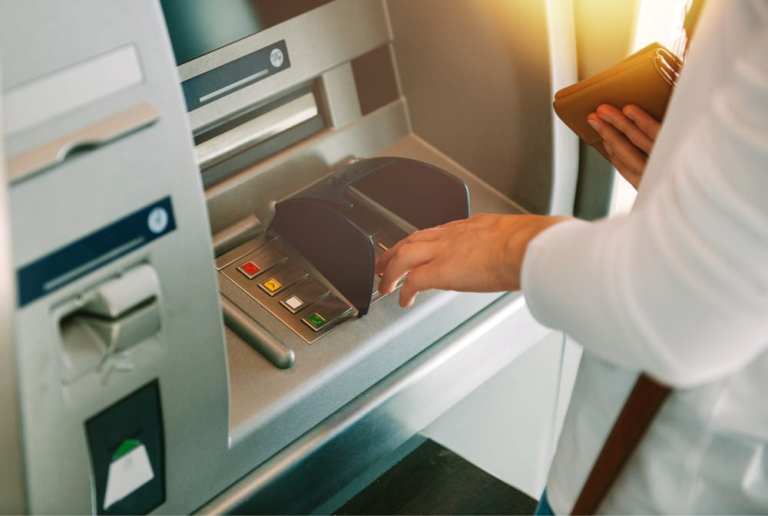ATMs are known for their convenience, offering walk-up or drive-through access to financial products like checking or savings accounts. Users leave with cash in hand or have checks deposited in minutes, all while avoiding the hassle of standing in crowded, slow-moving queues to speak with human tellers. Circumventing such delays is even more important during crises like the COVID-19 pandemic, which has made social distancing and limited contact with public spaces a necessity.
True service-related issues appear when comparing legacy ATMs to modern digital banking solutions. As online and mobile channels now provide nearly all the products offered at bank branches, it has become important for financial institutions (FIs) to design consistent, end-to-end experiences across all banking channels in order to retain their customers.
“We’ve always [taken] a holistic view of our members and said, ‘Well, when do they want to go to the branch versus when do they want to be able to [bank] anywhere?’” Tony Hildesheim, chief administrative officer of the Santa Rosa, California-based Redwood Credit Union, said in a recent interview with PYMNTS. “We try to make sure our ATMs meet [their] specific needs.”
Strategies for current and future ATM offerings require consideration of the entire ecosystem, he added. Failing to understand how products fit into the larger services scope could be a mistake for FIs, especially if the focus on the customer experience is lost in the mix.
Focusing on Consistency
Advertisement: Scroll to Continue
Traditional ATMs offer customers only limited access to accounts, but Redwood Credit Union has invested in allowing its members to access checking, savings, money market and other account types — as well as to transfer money between accounts — at its machines. Its goal was to make sure consumers could partake in all banking services through any channel.
“The rules have to work the same whether [members] walk into a branch and talk to the teller, go to an ATM or [transact] at home [online or through the app],” Hildesheim explained. “I want that experience to be consistent.”
The latest technologies and trends might sound like important additions to banking operations, but FIs should examine how consumers plan to use each channel before emphasizing new tools. Many credit union players have already added video capabilities to their ATMs, Hildesheim noted, but assuming that members want to use automated solutions for every interaction could alienate rather than assist them.
A member may not feel valued if he drives all the way from his home to speak with a teller at a CU branch and is instead referred to a video-enhanced ATM, Hildesheim cautioned. That member likely could have accessed such services online, and thus might feel as though the trip was wasted. Or, the member might have been unable to complete digital banking services from home due to a lack of the necessary device or internet service, and being directed to an unfamiliar machine might increase their sense of frustration. Understanding what users want from their experiences is key to ensuring that FIs offer products in the most inclusive, consistent ways.
“They can walk right up to an ATM within a few minutes, deposit that check and get a printout on the receipt with an image … so they have a record for themselves, and it immediately acts just like if they had walked inside the branch and had a teller do it,” Hildesheim said. “The holds are the same, the limits are all the same, so it’s a really good experience.”
The credit union also allows members to increase withdrawal limits from their mobile devices. Those with access to mobile banking channels can address on-the-go needs from their smartphones or by speaking with branch staff who can assist them with tablets. Members must have as many functions as possible within the context of their digital environments, Hildesheim explained.
The Costs of Upgrading
Some FIs have received positive feedback after upgrading to video-based ATM services, but Hildesheim has reservations about their ability to deliver the experiences or savings CUs would value following implementation. He acknowledged that there are perks to such offerings, including that FIs might be able to slightly reduce their teller counts or extend operations by enabling remote workers to answer after-hours questions by video. But these benefits may not be worthwhile if CUs’ branch locations are not redesigned with videoconferencing in mind.
“We have … branches that are automated cash branches, and they don’t really have a teller line,” he said. “If you’re going to deal with cash, you’re going to go to the ATM, and we’ve got people there with tablets [who] can help you do whatever you need to do.”
Cash is not disappearing the way some reports have claimed, Hildesheim added. This has made it all the more important to understand what members are doing at ATMs, because additional technologies don’t make sense if consumers are visiting the machines primarily for cash transactions.
“I really believe that, if nothing else, [stay-at-home orders during COVID-19 have] actually changed people’s ideas about what they need to do and how they need to interact with several entities, and FIs are just one example,” he said. “I think we’re going to see a major shift in how people bank as a result of the pandemic, and those credit unions and banks [that] have invested in digital, [and] have really thought about the mobile-first experience, [will] see a shift in behavior and probably gain membership as a result.”
Members are learning that they don’t have to visit physical branches to accomplish their financial tasks, Hildesheim added. This might lead to right-sizing brick-and-mortar spaces, focusing on keeping services as convenient as possible and giving users more options and consistency when accessing products across channels.
“You are not necessarily seeing only ATMs: You are seeing [FIs] experimenting with shrinking the footprint of the branch, making sure the full service is there [so that] if [customers] want to talk to a mortgage person, or [an] investment or insurance [representative] … they can do that at the branch,” Hildesheim said. “But if they just want to do a simple transaction, there is an ATM sitting right there, or you can do it on your mobile device.”
Options that allow members to bank as they choose will help keep them satisfied with their credit unions, but consistent, convenient experiences across in-branch solutions, digital or mobile products, and ATM offerings are even more important. This is especially true when customers cannot interact as they normally would. Those who feel their FIs give them the same service regardless of channel will be much more inclined to continue banking with those entities.





